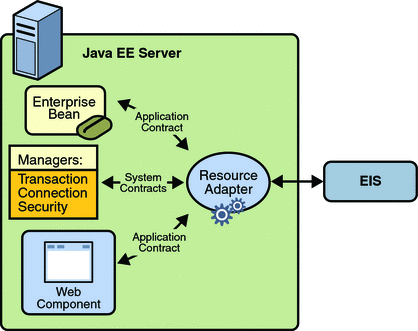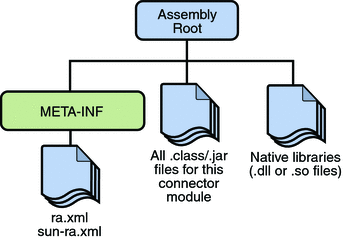About Resource Adapters
A resource adapter is a Java EE component that implements the Connector architecture for a specific EIS. As illustrated in Figure 35-1, the resource adapter facilitates communication between a Java EE application and an EIS.
Figure 35-1 Resource Adapter Contracts

Stored in a Resource Adapter Archive (RAR) file, a resource adapter can be deployed on any Java EE server, much like the EAR file of a Java EE application. An RAR file may be contained in an EAR file, or it may exist as a separate file. See Figure 35-2 for the structure of a resource adapter module.
Figure 35-2 Resource Adapter Module Structure

A resource adapter is analogous to a JDBC driver. Both provide a standard API through which an application can access a resource that is outside the Java EE server. For a resource adapter, the outside resource is an EIS; for a JDBC driver, it is a DBMS. Resource adapters and JDBC drivers are rarely created by application developers. In most cases, both types of software are built by vendors that sell products such as tools, servers, or integration software.



